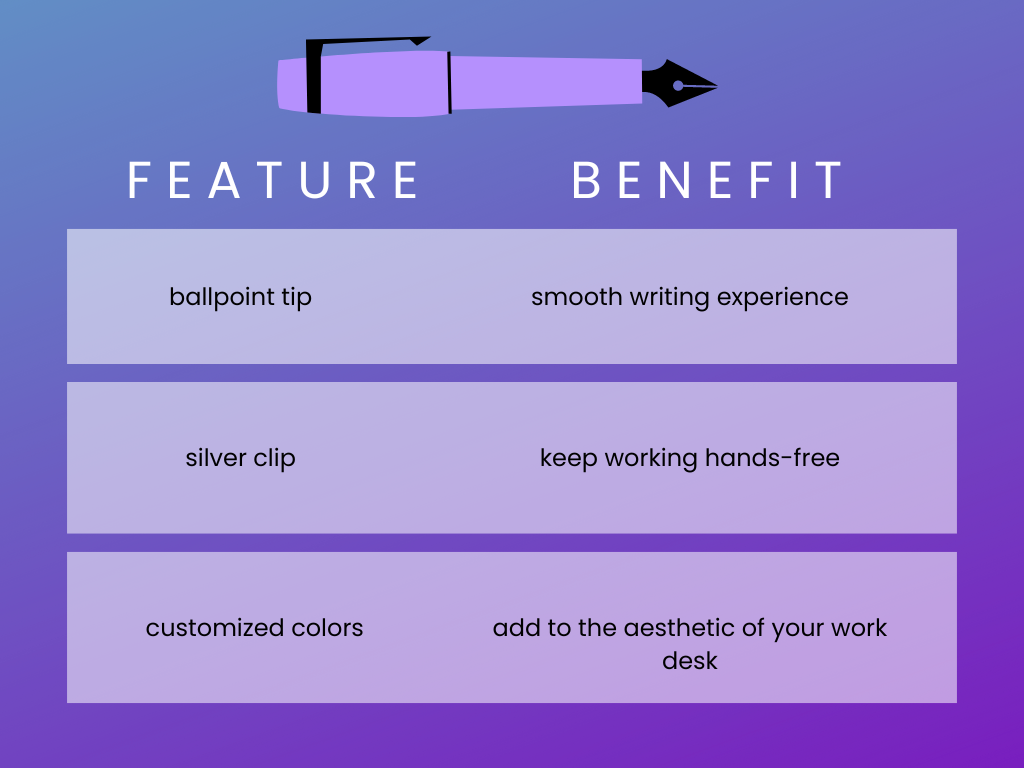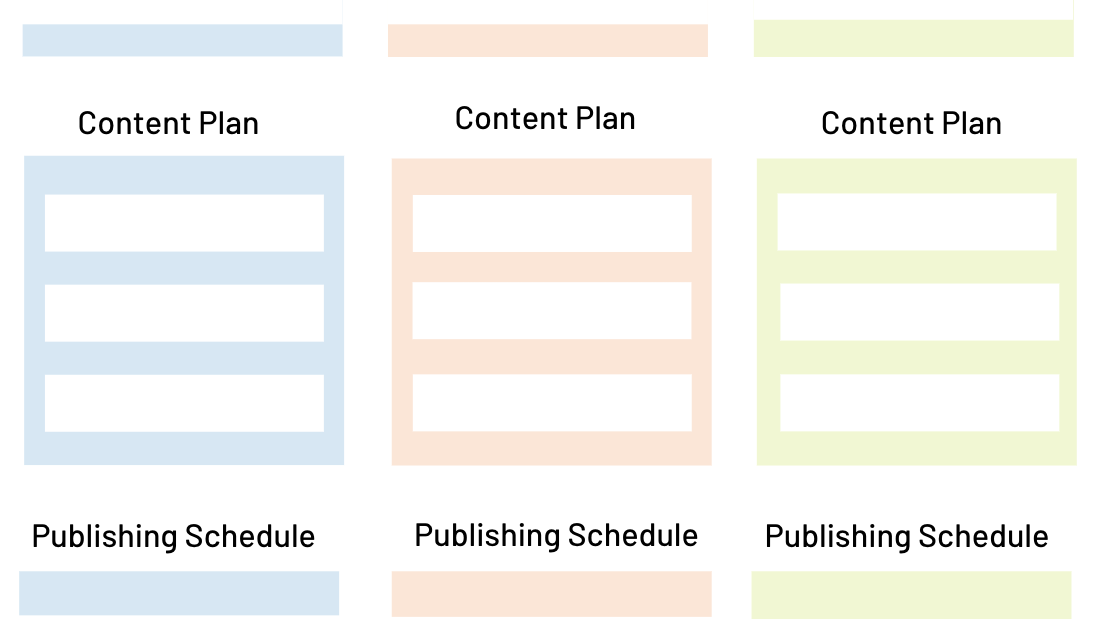Marketing starts with features and benefits
Establishing your business’ features and benefits is an important step early on. Features and benefits frame your mindset, messaging, and strategy.
Furthermore, features and benefits provide alignment across teams. When employees and customers speak about products with the same language, word of mouth grows consistent and powerful.
Recommended: The Guide to Product Messaging >
So how exactly do features and benefits work? Read on to learn the key differences - I’ll use plenty of examples to show you how to create your own.
What are Features?
Features are key details of a product - or the “what”. They come in the form of technical specs, deliverables customers can expect, packaging, or even the expertise of people. For instance:
Comes with a mobile app
Consultants' PHDs
Certified professionals
Extra space
Sweat-wicking fabrics
Let’s break it down with a simple example. The features of a pen could be:
blue ink
ballpoint tip
silver clip
colorful design
These are simply the specs that make the pen what it is.
What are Benefits?
Benefits speak to the value generated by features. They are the “why” behind your products. Here are some examples of benefits a product may have:
Save time so you can focus on other things
Be empowered to make better decisions
Feel more confident in your exercise clothes
Each benefit should match at least one feature. Continuing the pen example, benefits connected to the above features could be:
Pleasant smooth writing experience (ballpoint tip)
Keep working hands free (silver clip)
Add to the aesthetic of your desk setup (colorful design)
How to tie features and benefits into marketing messaging
Mapping features and benefits is helpful for businesses of all sizes. In fact, I included it in the first step of inbound content marketing for start-ups.
Now let’s walk through another example of a small deli. We’ll start with features and benefits and tie it into marketing messaging.
This deli might document the features and benefits of their best-selling sandwich as such:
Feature - Benefit:
Low Price - Don’t feel guilty about eating out.
High Protein - Stay full for longer.
Locally-Grown Ingredients - Feel good about eating fresh, organic ingredients and avoiding additives
Now that these are solidified, it’s much easier to brainstorm ideas for ad copy or social media captions.
Marketing Messaging (leading with the benefits and value):
At just $6.00, you can eat our subs every day for lunch!
Stay full until dinner! Our subs are packed with protein and the freshest local ingredients.
Welcome to our family-owned deli - we offer everything on your sub except the chemicals!
The importance of leading with benefits
Usually features are pretty easy to think of, but you’ll have to put more thought into the ultimate benefit and value provided.
Because we tend to think in terms of features when marketing our own products, we tend to lead with them in our messaging.
How many websites do you see listing features explained by the benefit? Here’s an example from a tech company:
Does anyone care what OTT 2.0 and Computer vision are? Do they even know what it means without researching?
Customers don’t care about how you generate value. They care more about what the value is. The core principles of their decision are going to be:
How much value is generated?
How much will it cost?
Ultimately, if the value is greater than the cost, they will purchase.
For this reason, you’ll want to highlight the benefits (or value generated) across your website. Then, use features to add credibility to these benefits.
Here’s an example of top content marketing agency Grow & Convert leading with a benefit in their course landing page:
Why are features and benefits so often ignored?
Marketers will talk about persona research and pain points all day. So rarely do you come across a feature and benefit analysis! Here’s why.
The feature and benefit step of a business is intuitively rolled into product development. When a developer begins an app or a plumber starts his business plan, they each keep their core competency and supporting details in mind.
Marketers will come in later and create messaging from core competencies and persona research. And as the product evolves over time, teams continue to skip the feature/benefit step moving forward in their content planning. Furthermore, many small teams lack product managers that are focused on this type of documentation.
The good news is, it’s not hard to make up for lost time. Try my features and benefits worksheet for guidance, or simply list your features and benefits by mirroring my examples above. Regularly completing this exercise can keep your business and product on track, no content agency needed!
Thanks for reading! You might also like…
The Product Messaging Guide
Learn how to develop a persona-first messaging framework that converts.
The Advanced Content Marketing Guide
Learn tricks to increase your content quality and build a research-based content strategy.
















